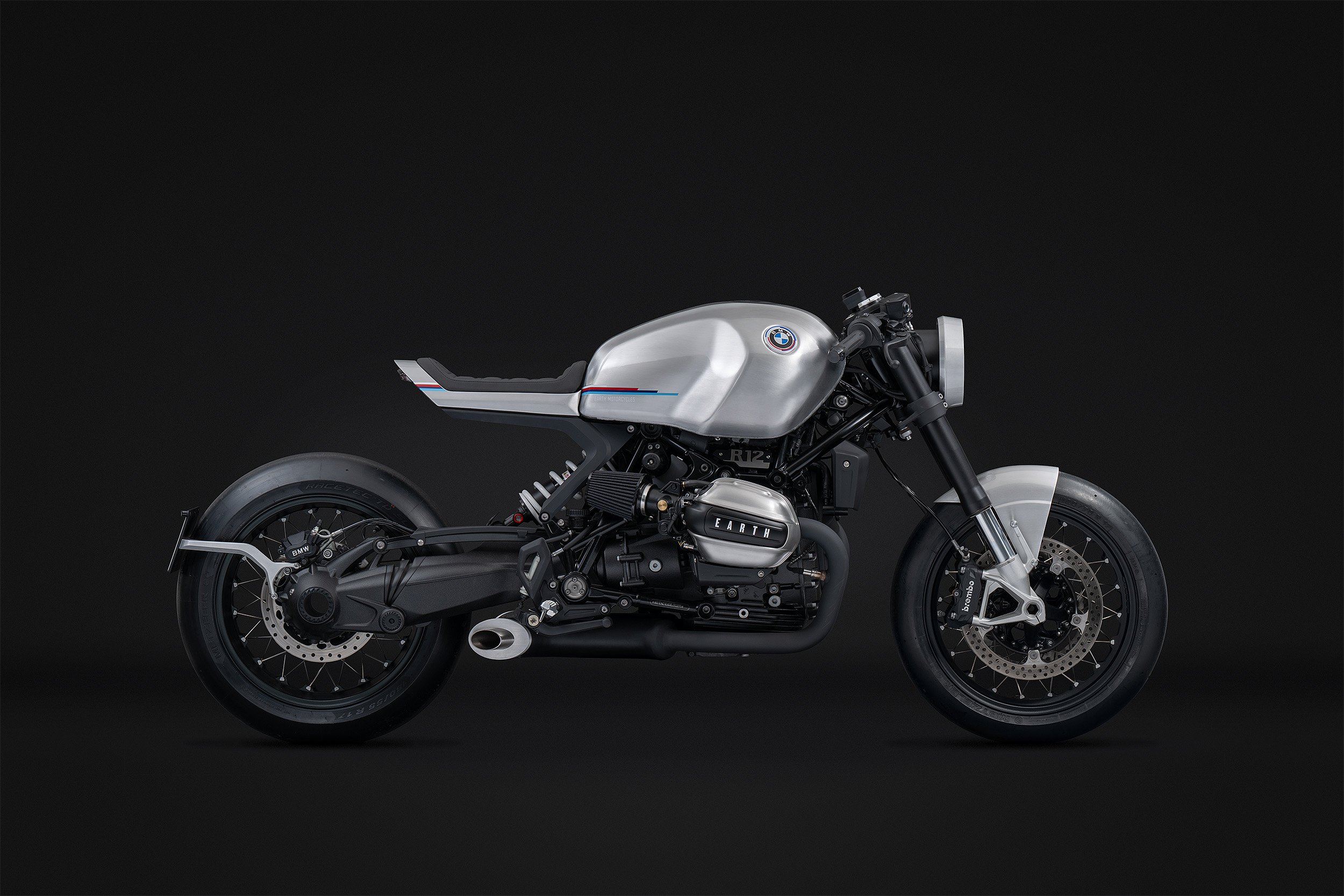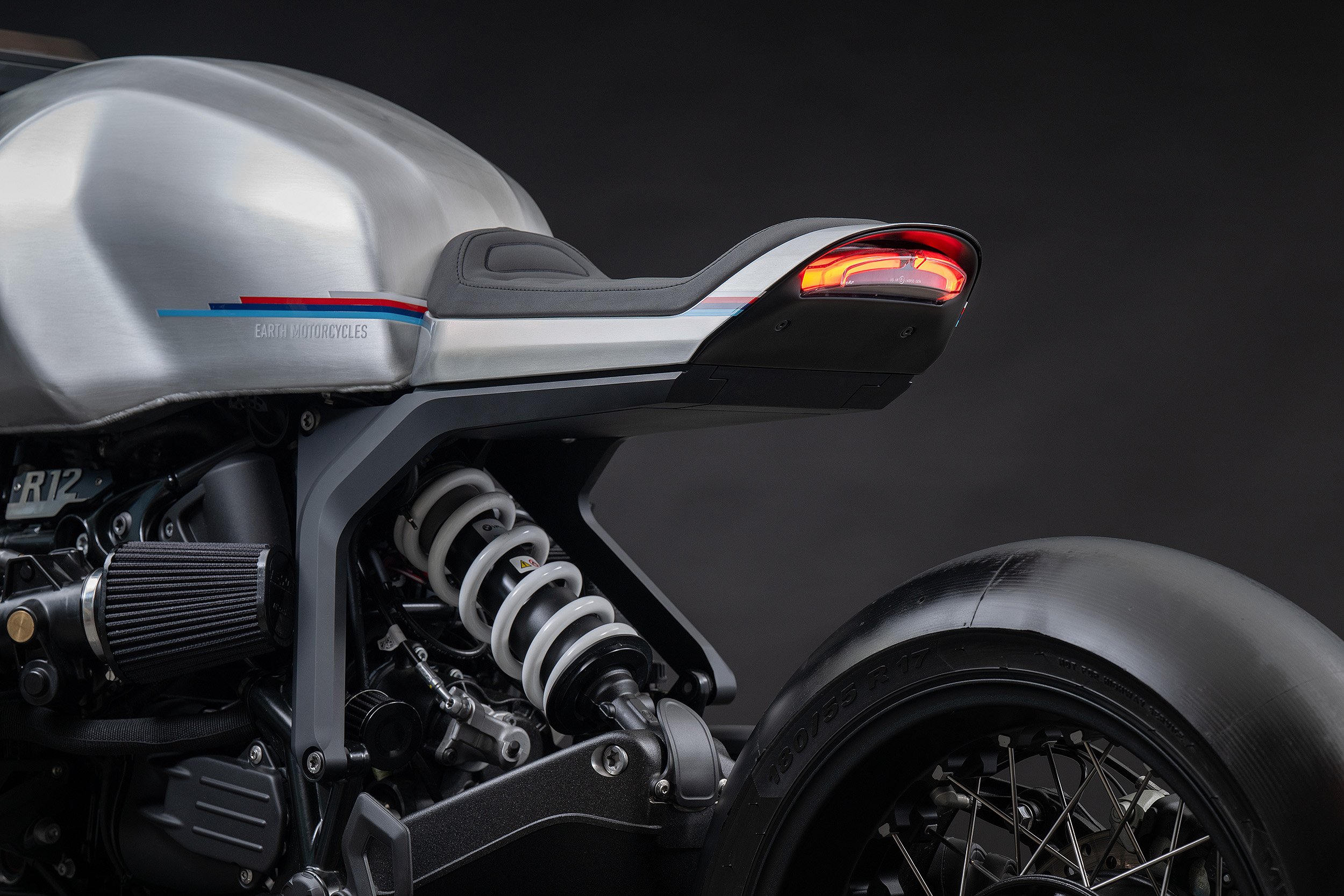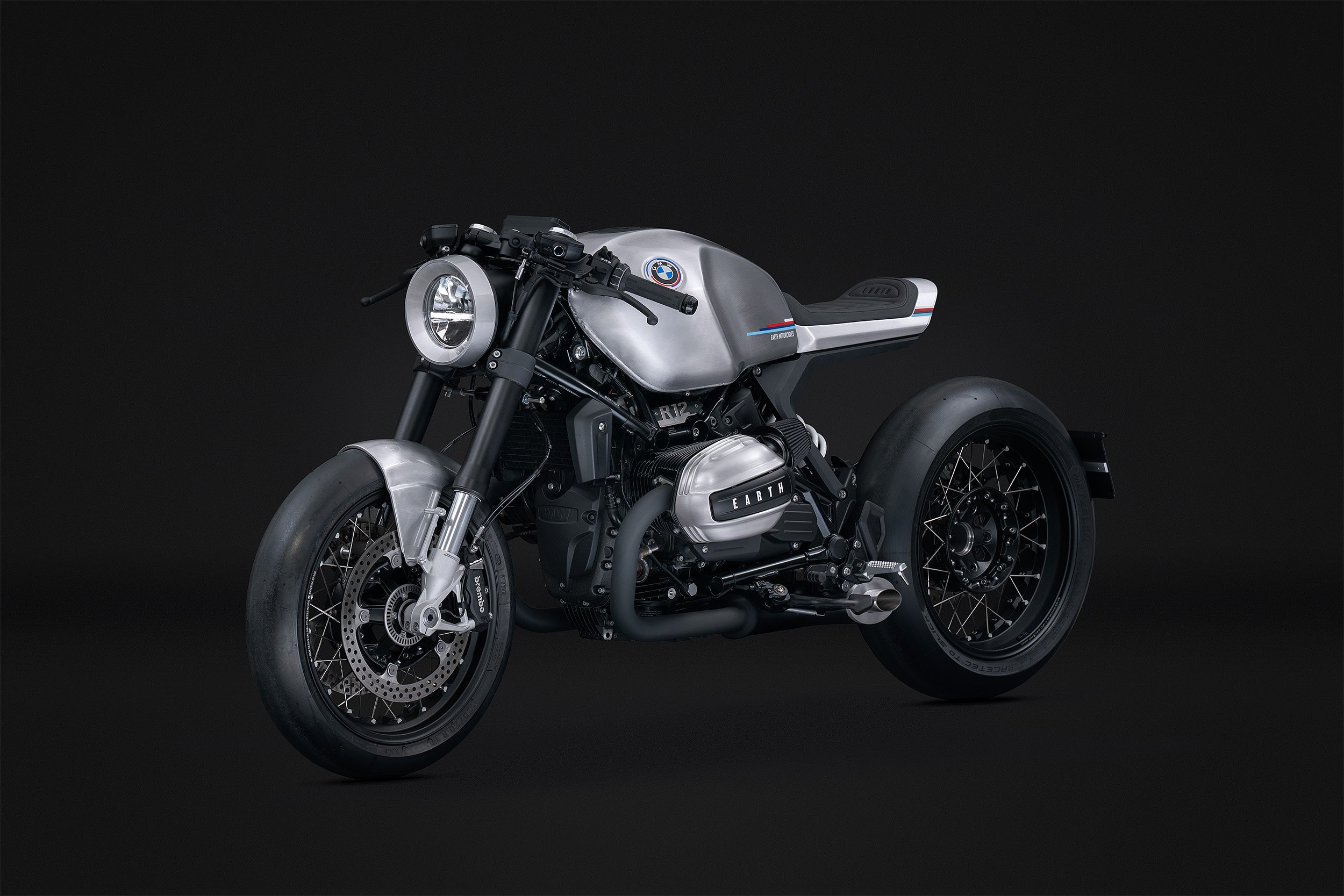
BMW R12 EARTH
R12 EARTH is a bold testament to the elegance of minimalism. Stripped down to its essential form, every line and detail serves a purpose—no frills, no distractions.

PURE FORM, RAW SPIRIT
The raw, brushed metal tank commands attention without shouting, its sculpted surface reflecting the purity of mechanical design. The monochromatic palette is broken only by a subtle BMW badge and a thin accent line, hinting at the heritage behind the machine without overshadowing its custom identity. With exposed components, a clean subframe, and a tucked-away exhaust, this build reveals the beauty of engineering laid bare. The result is a philosophy on wheels. Clean, efficient, and brutally honest, it invites the rider to connect with the road, the machine, and the moment.


REENGINEERED ELEGANCE
We have reimagined the iconic BMW R12 with a suite of meticulously crafted custom components, enhancing both its aesthetics and performance.

R12 EARTH PARTS
-
At the front, the motorcycle sports a distinctive new headlight unit that brings a modern edge to its classic form.
-
The all-new aluminum front fender, lightweight and durable, blending seamlessly with the bike’s refined stance.
-
A completely redesigned subframe structure forms the backbone of the transformation, supporting a bespoke sub-seat and a newly sculpted seat tailored for both comfort and style.
-
A custom tachometer holder, perfectly integrated into the bike’s minimalist cockpit for a clean and purposeful appearance.
-
A unique plate and taillight holder, designed with precision to complement the bike’s sleek lines while maintaining road-legal functionality.
-
The complete exhaust system—crafted from stainless steel with dual silencers and aluminum end caps—delivering not just stunning looks but also enhanced performance and a deeply resonant exhaust note.
REDEFINING STRUCTURE
At the heart of this custom build lies its most groundbreaking innovation - the subframe with integrated subseat and a new, signature seat. Designed in collaboration between EARTH Motorcycles and the BMW engineering minds at Valta Engineering, this newly developed structure allows for an exceptionally clean silhouette - no visual disorder, no excess material. Every angle of the structure manifests precision and intent, echoing the minimalist philosophy that defines the entire bike.

The sub-seat structure, seamlessly fused with the subframe, creates a compact and cohesive design that flows naturally into the sculpted BMW tank. The integration of the original R12 rear light subtly honors its BMW heritage, reinforcing its identity while maintaining a clean, futuristic silhouette.
-

Crafted from aerospace-grade aluminum, the subframe attaches seamlessly to the original mounting points, eliminating the need for crossbars or conventional support elements. Instead, it relies on a single, CNC-milled L-shaped structure that’s not only feather-light but incredibly strong.
-

The custom EARTH signature seat blends comfort with minimalism, featuring a sleek form and precision-stitched pattern that mirrors the bike’s clean lines. Subtle yet refined, it complements the subframe and reinforces the motorcycle’s crafted, cohesive design language.
-

Housed in custom CNC-machined aluminum, the headlight is both functional and sculptural. Its brushed finish contrasts the black fork, echoing the bike’s minimalist aesthetic. With modern LED tech, it balances café racer heritage with sharp, contemporary craftsmanship and design purity.
-

Handcrafted from lightweight aluminum, the Cyber Racer’s front fender reflects minimalist intent. Its brushed finish adds industrial elegance, subtly reinforcing the bike’s clean lines. Visually restrained yet structurally solid, it proves that refined detail can shape the entire design language.

-

Precision-machined from aircraft-grade aluminum, this unique holder mirrors the subframe’s silhouette. Integrated with a certified minimalist LED light strip, it offers clean visibility and structural strength—seamlessly blending safety with design in one sharp, cohesive visual and functional element.
-

Made from stainless steel, the new EARTH exhaust uses twin silencers to boost both performance and style. Capped with precision aluminum, it delivers a deep, powerful sound and improved throttle response—combining raw character with refined, functional craftsmanship.

ONE FOUNDATION, THREE SOULS
At EARTH Motorcycles, customization goes beyond aesthetics—it’s about tailoring the entire riding experience. From a single custom design based on the new BMW R12, we offer three distinct models to match different lifestyles and preferences. All three share the same minimalist DNA and engineering excellence, but each tells its own story—yours to choose.
The Cyber Racer is for the purist. With clip-on handlebars, aggressive ergonomics, and a forward-leaning stance, it’s a modern nod to classic racing machines.
The Urban Sleeper is refined for everyday comfort, featuring drag bars, a design-forward skid plate, and minimalist front and rear fenders. It’s sleek, subtle, and built for city rides. Available in Electric Red, Lawn Green and Azure Blue.
The Road Crosser embraces the spirit of exploration. With raised fenders, rugged adventure tires, and motocross handlebars, it’s a contemporary scrambler ready for both street and trail. Available in M Red, M Blue and M White.

CONFIGURE YOUR BIKE
ARE YOU THINKING ABOUT NEW BMW R12 EARTH?
If you like our motorcycles and have the intention of riding a similar one, do not hesitate to contact us!
info@earthmotorcycles.com



